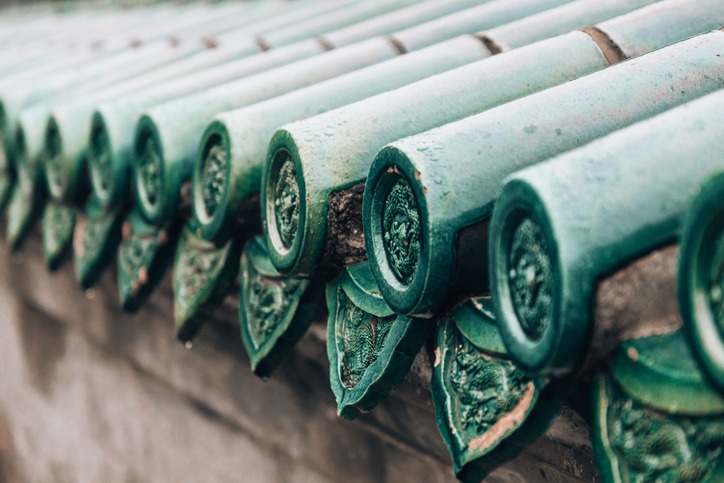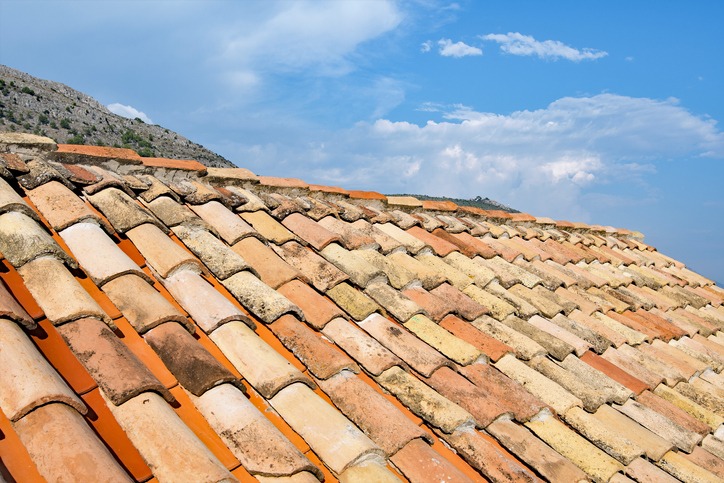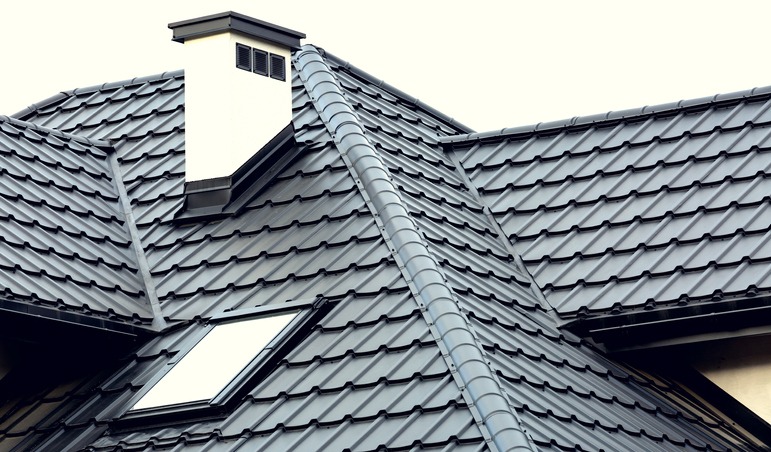The history of roofing dates back to ancient times when humanity finally decided to leave the comforts of his cave and began to form civilizations. From straw and clay roofs to solar tiled and green roofs, roof architecture has come a long way.
Despite the centuries-old history, the purpose of roofing remains the same; a shelter from the rain, sunlight, and extreme weather. This article highlights the major advancements in the structure and design of roofing throughout history.
Ancient Days – The First Roofing Materials
During the paleolithic and prehistoric eras, humanity was only clever enough to use the materials available to them. It was a time when most roof structures were made of sticks, mammoth bones, and tree branches covered with leaves, animal hides, mud-covered reeds, and straws. This roofing provided them with the needed insulation and protection from the harsh weather conditions and the wild.
Archeologists suggest that proofs of the first roof structures developed in antiquity can be found in pit-houses (dugout houses) at around 40,000 BC. These ancient dwellings feature a single-pitched or multi-pitched roof system that reaches the ground. The roofs are usually grass, heather, reed, and straw. This type of roofing structure is still prominent today.
But, the materials were not immune to pests, vermin, and natural decay. These ancient shelters proved vulnerable, and people had yet to find new ways to fortify their homes. With the evolution of man came the improvement in roofing structures and techniques.
The conception of Thatch Roofing
Thatch roofing is an ancient roofing method, only more improved and developed. Around 735 AD, people used dry vegetation such as bush, straw, reeds, wheat, and sedge for roof covering. Common in the ancient civilizations of Maya, Inca, and Aztecs, thatched roofing was also prominent across Europe, especially during the Neolithic period, in the birth of cereal agriculture.
While the concept of thatched roofing was prevalent in the Chinese, Greek, and Roman civilizations, Europeans still used slate and wood for the most part. Wooden roofing was widespread in northern Nordic cultures, while slat was used in nearby states like France. Nevertheless, by 735 AD, Romans brought thatch roofing into Europe.
These roofs had already received wide acceptance in the equatorial region of Hawaii and Bali. Despite the evident risk of fire associated with them, thatch remained one of the primary roofing materials until the 12th century. King John, during his reigns, passed laws and commandments to start using clay tile roofing instead of thatched ones to prevent any damage.
The Rise of Shingle Roofing
The shingle roofing concept is humanity’s first attempt at roofing innovation, primarily as a solution to the imminent risk of fire. The Shingle roofing principle is still one of the roofing structures and techniques in the modern era. It is a technique where the roof is covered with tiles, usually made of wood, earth, stone plates, and clay laid one after the other in an overlapping fashion.
Moreover, records show that approximately 4,000 to 5,000 years ago, the Babylonians embraced the same roofing principle and used earthenware tiles for materials. Earthenware tiles are made of clay that has become impervious to liquid through the process of glazing.
China’s Advancement in Shingle Roofing

It was foggy in the winter morning, there were not many tourists in the Temple of Heaven Park.
The picture shows glazed tiles.
The Temple of Heaven Park was a place where emperors worshipped the emperor and prayed for an abundance of grains In the Ming and Qing dynasties.
The concept of roofing was much advanced in early Asia compared to other regions. Thatched and tiled roofing were standard in the region, especially in Japan in the Jomon era (1300 BC to 300 BC). These houses were usually made of wood with thatched or tiled roofing due to their abundance and better protection against earthquakes.
Earthquakes have been a leading factor that prevented Chinese buildings from growing vertically. Hence, the community started building large single-story structures with gable and hip roofs. These buildings used a center pillar that bore most roof weight instead of walls.
China has a rich ancient history of architecture. According to researches, clay tile in shingle roofing was first used in China about 5,000 years ago. Ancient Chinese structures feature roofs made of interlocking clay tiles, providing dwellers with sturdy and durable protection and insulation, especially during extreme summers and winters.
Imbrex and Tegula Roofing by Greeks

Greeks and Romans revitalized the building architecture immensely. The earliest home structures in Greece were built from clay bricks and had long and overhanging eaves attached to the roofs that kept the rain away. However, the Greeks wanted more than just protection from the rain. However, clay bricks were soon replaced by stone blocks due that added more to the strength of the building.
The strength and durability of the stone walls, allowed Greeks to create heavier roofs like thatched roofs. But the inflammability posed too high a threat to thatched roofs, so, around 650 BC, roof tiles became the dominant source of roofing.
The Greeks and Romans developed the imbrex and tegula roofing style, but the Chinese first introduced the concept. The imbrex and tegula were two different shaped tiles made with fired clay. The imbrex tiles are flat square pieces with slightly curved sides, while the tegula tiles were half-bamboo shaped.
The tegula tiles were meant to be placed on top of two imbrex tiles joining together and preventing the water from seeping through. Imbrex and tegula tiles were refined until they became a standard roofing system throughout the Mediterranean culture.
Roofing in the Middle East
When it comes to architecture, the mighty ancient Egyptian civilization, if full of mystery and fascination even today. While the rest of the world was busy building thatched roofing, the pharaohs in Egypt were creating monuments of wonder at around 3000 BC.
Apart from the massive pyramids, Egyptians had a unique way of dealing with the hot and dry climate of the region. The houses had flat roofs only meant for sleeping during the night. With the hot climate and no special ventilation system, the homes offered only a little daytime usage. They initially constructed houses using mud blocks; however, stone blocks soon took over the Egyptian construction.
Domed Roofs

The roofing found in the middle east during the ancient and middle ages is slightly different due to the warm climate. After constructing the dome of the rock in 691 AD in Palestine, the domed roofing trend has since picked up in the region.
The dome roofing is usually associated with Muslim architecture. They are constructed using various materials from wood to concrete and are generally of the same size as the rest of the building.
The dominance of Clay, Concrete, and Ceramic Shingles in Europe
By the 18th Century, clay tile roofing was already prominent, and the industrial production of this earthenware had already begun. It is most prevalent in Middle Europe for its beautiful, classic look and durability. In Rome, we can still see many old buildings having ‘red-tile roofs’ to remind the roofing systems’ humble beginnings.
In the first half of the 20th century, clay tiles were made far more sophisticated. The tiles had raised weatherbars that could interlock instead of placing them simply on top. These clay tiles provided better water resistance than their counterparts.
In the early 1900s, wood shingles were prevalent roofing materials. However, due to fire risk, authorities discouraged it, and asphalt became one of the alternatives. The material was light yet durable and was fire-resistant.
Soon after, the concrete tiles were developed, and adding color pigments that resemble clay tiles became common practice. However, clay tiles still outperform concrete ones in weight, durability, insulating properties, and water absorption.
Ceramic tiles also became viable as a roofing material. It originated in Spain but was later made famous in the US for its sturdiness and stylish look that creates tessellations of ‘ripples’ across the roof.
FAQs: The History of Roofing
1. What is the oldest roofing material still in use?
Thatched roofing is the oldest form of roofing still being used today. These roofs were constructed using bundles of dried grass or reeds submerged in mud. The thatches were placed vertically that helped better against water resistance.
2. What is shingle roofing?
Shingles are a roofing system constructed by overlapping square and piped-shaped tiles (traditional) or simply square coverings (modern) on top of each other.
3. What roofing is in trend today?
Asphalt shingle, metal roofs, rubber roofs, slate shingle roofs, and wood shake rooks are common types of roofing used today. Some roofs are also covered with solar panels for self-sufficient energy production.
The Future of Roofing
With the fast-paced technology almost taking over our lives, there is no telling what the future holds, but one thing is for sure – our homes can only improve. Some homes and commercial buildings now incorporate modern energy renewability and sustainability technology.
Solar panels partially or fully covering the roof slowly becomes a trend, especially today where there is an increased cost in energy alongside its rising demand. Companies like Tesla develop seamless roof designs that integrate solar energy collection and storage systems.

